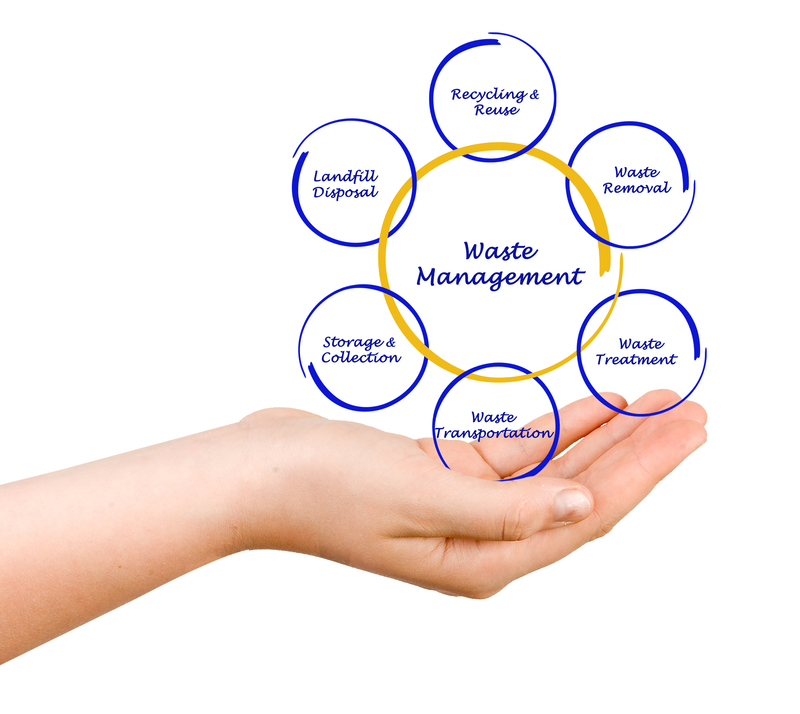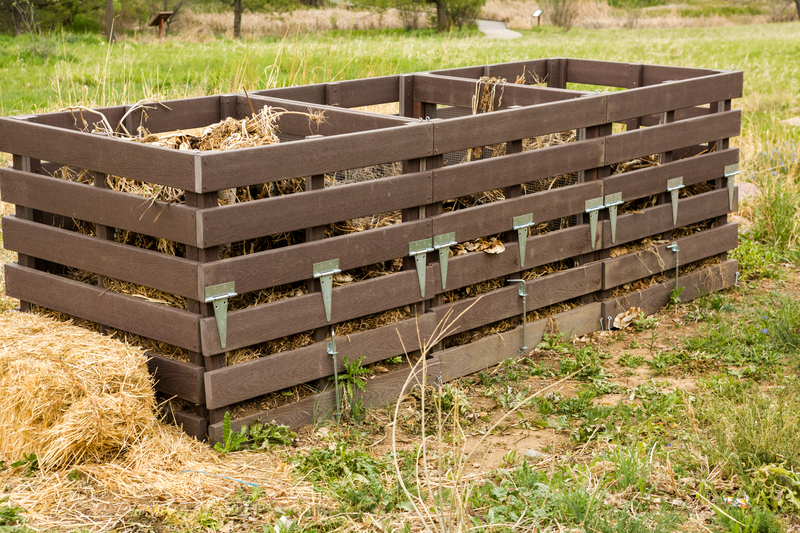Microplastic Pollution: Steps We Can Take to Stop It
Microplastic pollution has quickly become a critical environmental concern, affecting ecosystems, wildlife, and even human health. These tiny plastic fragments are pervasive, showing up in oceans, rivers, soil, and even the air we breathe. Understanding what causes microplastic contamination and learning how to reduce microplastics is essential for safeguarding our planet's future. In this comprehensive guide, we will delve into what microplastics are, their sources, their impacts, and--most importantly--the practical steps each of us can take to minimize microplastic pollution.

What Are Microplastics?
Microplastics are plastic particles less than 5mm in size. They come from a variety of sources, including products containing microbeads, the breakdown of larger plastic debris, and synthetic fibers from clothing. Microplastics are classified into two main types:
- Primary microplastics: Manufactured small plastics like microbeads in personal care products and pre-production pellets, also known as nurdles.
- Secondary microplastics: Result from the degradation of larger plastic waste, such as bottles, bags, and fishing nets.
Both types contribute significantly to the global microplastic pollution crisis.
How Do Microplastics Enter The Environment?
The pathways for microplastic contamination are varied and complex. Here are the key entry points:
- Wastewater Discharge: Microplastics washed down drains from personal care products and synthetic fibers pass through wastewater treatment plants, which often cannot filter them entirely.
- Wear and Tear: Car tires, artificial turf, and synthetic clothing shed microplastic fibers and particles simply through daily use.
- Degradation of Plastic Waste: Large plastics break down in the environment due to sunlight and mechanical action, creating small fragments.
- Runoff: Stormwater runoff can carry microplastics from roads and landfills into rivers and oceans.
Why Is Microplastic Pollution a Major Concern?
Microplastic pollution is not just an aesthetic issue. It threatens:
- Marine Life: Marine animals mistake microplastics for food, which can block digestive tracts, lower nutrient absorption, and even cause death.
- Food Chain Contamination: Humans ingest microplastics by consuming seafood and other products where these particles have bioaccumulated.
- Soil and Crop Health: Studies show that microplastics in soil may affect earthworm health and hinder crop growth, impacting agriculture and food safety.
- Clouding Water Supplies: Fragmentation of plastics pollutes water sources, making filtration and purification more challenging (and costly).
With such far-reaching consequences, curbing microplastic pollution is an urgent priority for individuals, businesses, and governments alike.
Steps We Can Take to Stop Microplastic Pollution
1. Reduce Single-Use Plastics
Single-use plastics, such as bags, bottles, and straws, are a major source of secondary microplastics. By minimizing our reliance on disposable plastics, we can significantly reduce the microplastics entering our environment. Here are some simple ways to reduce single-use plastic usage:
- Carry reusable shopping bags, bottles, and containers.
- Avoid products with excessive packaging.
- Choose alternatives made from biodegradable or compostable materials.
2. Choose Clothing Made From Natural Fibers
Washing synthetic fabrics like polyester, nylon, and acrylic sheds thousands of microplastic fibers with each load. Selecting clothing made from organic cotton, wool, hemp, or bamboo can significantly lower microfiber pollution. Consider these additional steps:
- Wash clothes less frequently and in full loads.
- Use front-loading washing machines, which produce fewer fibers compared to top-loaders.
- Add a microplastic-catching filter or bag, such as the Guppyfriend, to your laundry routine.
3. Support Microplastic Wastewater Filtration
Many wastewater treatment plants are not equipped to capture microplastic particles. Advocacy for investment in better filtration technologies can make a difference. Some actions include:
- Encourage local officials to prioritize upgrades to municipal wastewater systems.
- Support research into efficient microplastic-removal technologies.
- Install home filtration devices designed to capture microplastics before water enters wastewater systems.
4. Ban or Avoid Microbeads and Single-Use Microplastics
Microbeads, once common in exfoliating beauty and cleaning products, are a preventable source of microplastic contamination. Although banned in many countries, they still appear in some products.
- Read ingredient lists and avoid products containing "polyethylene" or "polypropylene."
- Opt for natural exfoliants, such as sugar or salt scrubs.
- Pressure brands and retailers to eliminate microplastics from their products.
5. Properly Dispose of and Recycle Plastic Waste
Correct plastic disposal prevents the breakdown of larger items into microplastics. Here's what you can do:
- Recycle qualified plastics as per local regulations.
- Participate in community clean-ups and plastic collection drives.
- Avoid littering and collect stray plastic waste during outdoor activities.
6. Choose Products Without Synthetic Fragrances and Additives
Some products contain microplastic additives or microbeads for stability or texture. Research alternatives and make informed choices:
- Look for "plastic-free" labeling on cosmetics and cleaning products.
- Purchase from brands committed to microplastic-free production.
- Share information with friends and family to amplify the impact.
7. Advocate for Stronger Regulations on Microplastic Pollution
Policy changes are among the most effective solutions for systemic issues like microplastic contamination. Get involved by:
- Supporting legislation to limit microplastic use in industry and ban microbeads in personal care products.
- Contacting legislators to voice support for tighter plastics regulation.
- Joining non-profits and organizations working on microplastic research and advocacy.
8. Rethink Household Cleaning and Personal Care Products
Many cleaning and grooming products contain or generate microplastics, especially in the form of scrubbers and wipes. Instead:
- Choose reusable cleaning cloths over disposable wipes.
- Switch to natural loofahs, brushes, and scrubbers.
- Avoid products with microplastic "shimmer" or glitter.
Business and Institutional Solutions to Microplastic Contamination
Eco-Design and Sustainable Manufacturing
Businesses can play a pivotal role in addressing microplastic pollution by adopting eco-friendly design principles. This includes:
- Developing products that use biodegradable materials.
- Minimizing plastic packaging and integrating reusable options.
- Eliminating microplastics from manufacturing and supply chains.
Improved Tires and Road Runoff Management
A significant source of microplastic contamination stems from tire wear. Companies and communities can work together to:
- Research and develop tires that generate fewer microplastics.
- Install better filtration systems for roadside runoff.
- Utilize eco-paving materials and designs to minimize debris release.
Investing in Advanced Waste Management
Effective waste management is crucial to prevent the entry of microplastics into the environment. This can be enhanced by:
- Supporting research into efficient plastic recycling and recovery technologies.
- Establishing take-back programs for plastics and synthetic products.
- Educating employees and customers about sustainable practices.
The Role of Science and Innovation in Tackling Microplastic Pollution
Recent innovations in microplastic detection, recycling, and filtration offer hope for a cleaner future. Notable approaches include:
- Bioremediation: Using bacteria and enzymes to break down plastics naturally.
- Magnetic Filtration: Utilizing specially designed magnets to capture and remove microplastics from water.
- Polymer Alternatives: Creating bioplastics and other alternatives that decompose quickly and safely.
- Remote Sensing and AI: Monitoring microplastic pollution spread using advanced data analytics.
What You Can Do Today to Fight Microplastic Pollution
While the scale of the microplastic crisis may seem daunting, every action counts. Here's a checklist to help guide your efforts starting now:
- Assess your household plastic usage and identify areas for reduction.
- Switch to natural fiber clothes and eco-friendly household products.
- Support microplastic clean-up campaigns and organizations.
- Spread the word on social media about the dangers of microplastics.
- Support responsible brands, businesses, and legislators focused on reducing microplastic contamination.

Frequently Asked Questions About Microplastic Pollution
Are all microplastics dangerous?
While not all microplastics are inherently toxic, many can absorb harmful chemicals from the environment or contain dangerous additives. Once ingested, these pollutants can accumulate inside living organisms and cause a range of health problems.
How can I tell if my products contain microplastics?
Read the ingredient lists for terms like "polyethylene," "polypropylene," "nylon," "acrylates," or "PET." Opt for products labeled as "microplastic-free" or certified biodegradable.
Is recycling enough to stop microplastic contamination?
Recycling is critical but not sufficient on its own; prevention and reduction at the source are key to halting the spread of microplastic pollution.
Conclusion: Unified Action for a Microplastic-Free World
Addressing microplastic pollution requires a concerted effort from individuals, businesses, and governments. With simple daily choices, advocacy for effective policy, and support for innovative solutions, we can significantly reduce our microplastic footprint.
Together, we can protect the environment, our food supply, and future generations by taking decisive steps to end microplastic contamination. Now is the time to act--every piece of plastic we prevent from becoming a pollutant makes a difference.